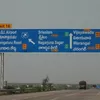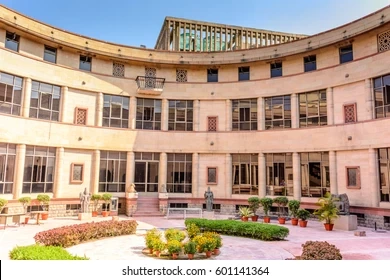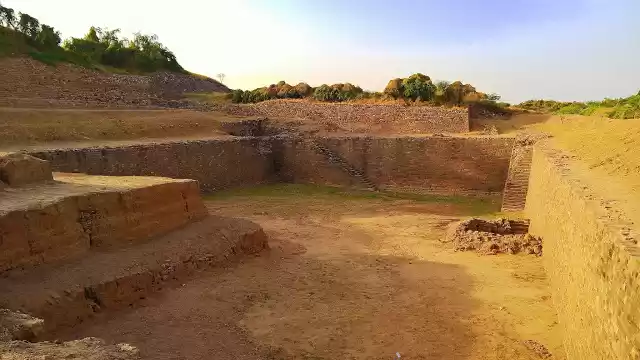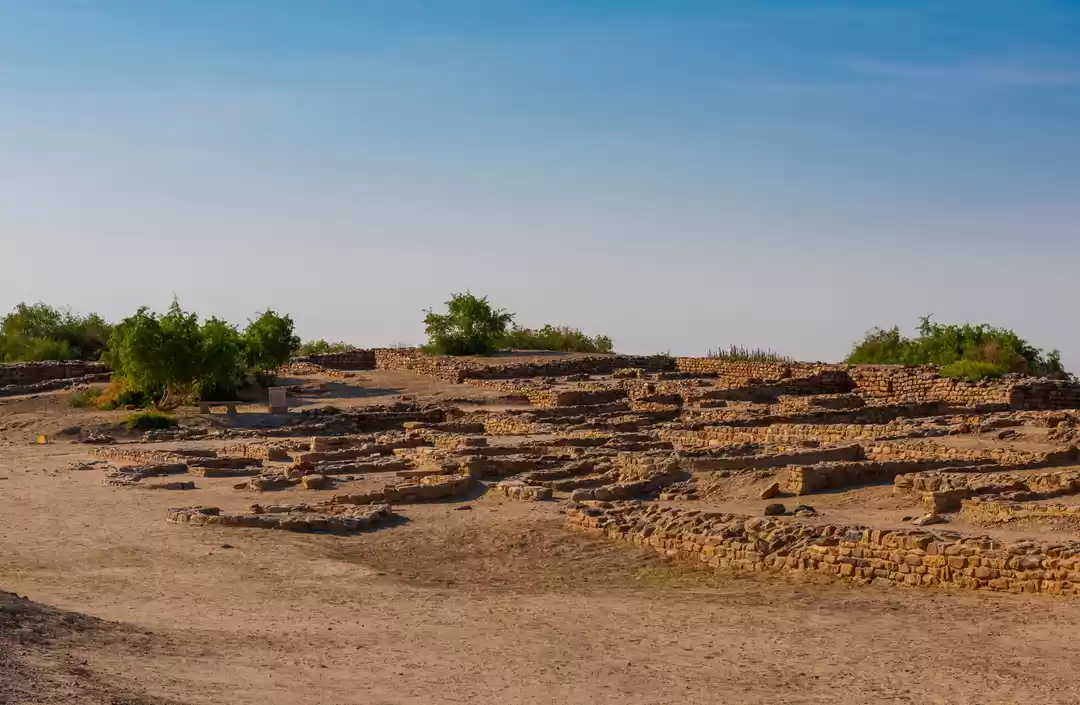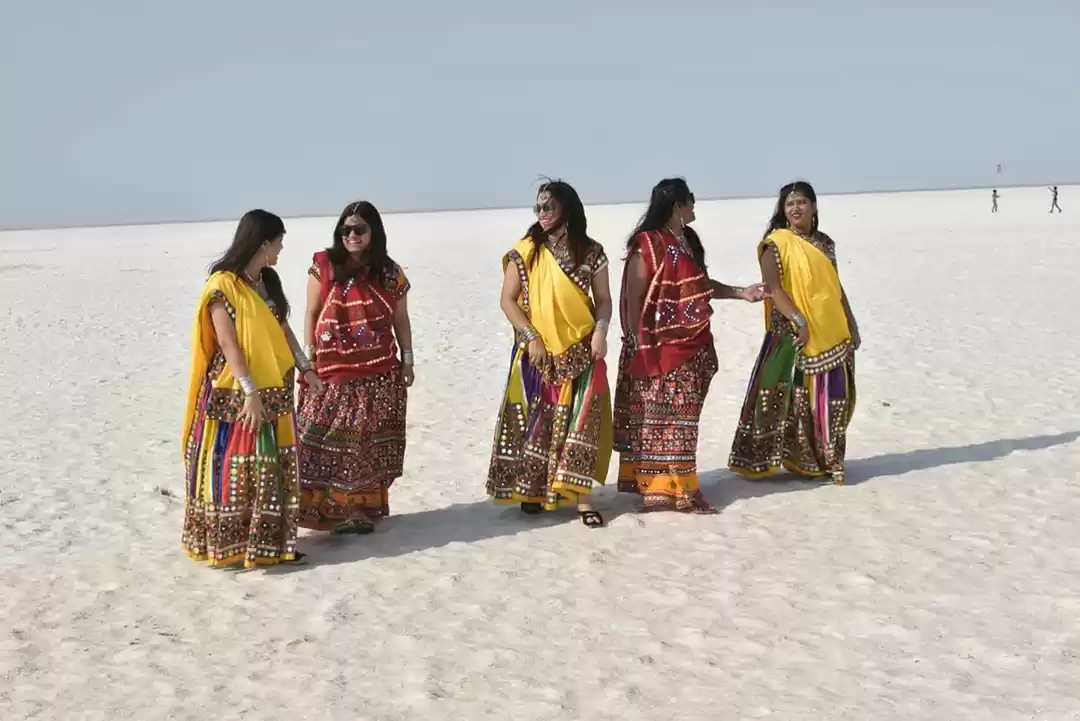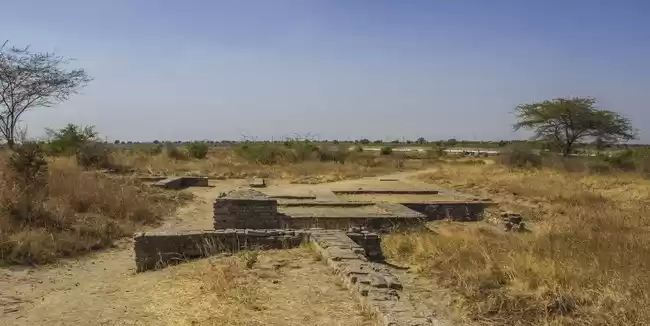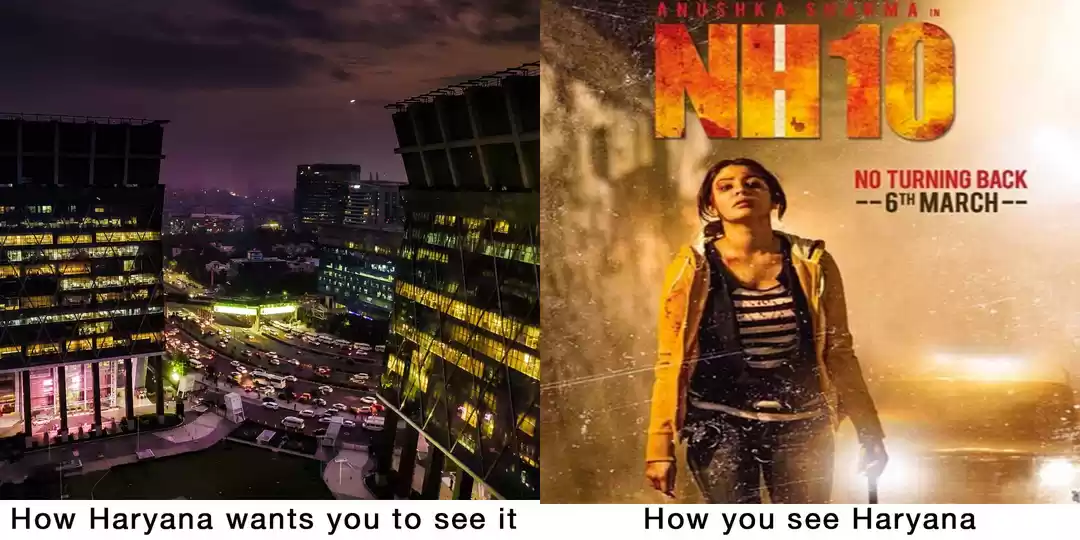On Day 3, we were given a taste of the famed Delhi fog. We woke up to find the entire area almost invisible, we could see nothing except dense fog. We promptly took a cup of hot green tea and went over to the terrace to feel the chill fog on our faces. It was nothing we had experienced before, in the coastal areas where we grew up, one does find fog sometimes in the winters that lasts till sunrise but this kind of thick fog that doesn't makes everything disappear and doesn't lift till mid-morning was a first for us.

If you can, spot the Dwarka Metro station (no, it's not the building that you can faintly see) somewhere in the picture !
A date with History
Statutory warning : This is going to be one long essay on this writer's love for the Indus Valley Civilisation !
When the weather is as foggy and cold as that, one naturally wouldn't want to step out and go anywhere, in Delhi, you wouldn't be able to step out in the first place unless you want your car to bump into something but on that day, we couldn't miss our date with history, the primary interest behind this entire trip - a visit to the National Museum to see the history we studied in books come alive !

Ever since this writer chanced upon a blog about the Harappa Gallery of the National Museum, it became a part of our bucket list. A big fan of the Indus Valley Civilisation, there was a time when this writer nurtured dreams of becoming an Archaeologist, how that dream turned into a corporate law nightmare is another story but history continues to the first love. Imagine you had a celebrity crush and you were going to meet them for the first time, that was precisely the feeling as this writer walked into the Harappa Gallery.
At the entrance there is a board giving information about the Indus Valley and right next to that you will find this, the Pashupathi Seal.

This depiction is considered a very early depiction of Lord Shiva, who is also worshipped as Pashupati. The seal is dated back to 2000-2500 B.C, that is 4500 years ! The Indus script has not yet been deciphered despite research over several decades now, wonder what secrets lay hidden behind the script?
The Indus Valley Civilisation is believed to be the earliest kind of urban life, for years it was called the Indus Valley Civilisation because the ruins of the cities were found along the banks of the Indus river and it tributaries. The Indus Valley Civilisation and the Aryan Invasion theory is perhaps the most controversial theories on India's history. Lately, research says the civilisation is actually supposed to be called the Saraswathi Civilisation because the ruins are located on the banks of the dried up Saraswathi River and the Aryans were not a race but a mix of migrants from the Saraswathi Civilisation who probably moved East after their life giving river dried up. In the world of history research, this is being largely accepted but our history books still talk about the Aryan-Dravidian divide and we are still having the North India vs South India debates !
Moving on, breathes there an Indian student who has not seen this picture in their History textbook?

The famous "Dancing Girl" of Mohenjodaro ! This writer almost cried in joy, the others must have thought - senti"mental" history lover. Our history books magnify the image but the bronze figurine is only a little over 4 inches. They call it the "Dancing Girl", is she really dancing? What could have been the idea of the sculptor? Also, check out the little puppy, it really is very tiny. Art and talent truly is timeless.
The Harappa Gallery is like a time machine, you feel like you have been transported to the Indus Valley cities and taking a tour of their streets and looking at their pottery, bronze statues, terracotta figures, seals, beads, jewellery.

The designs on the pottery and beads are amazing, you would be surprised to find that some of the designs are still in use, like this one that we found very amusing.

The heart symbol, with love from the 2700 BC to 2017 AD !
The Harappa Gallery also has a skeleton found in Rakhigarhi, Haryana, we had no idea that the gallery had a skeleton and were quite shocked to find one, not for the faint hearted ! Here are some visitors taking a look at it.

No, we are not showing you the picture of the skeleton, we don't know if we can share it without the consent of the owner of the skeleton !
Another interesting exhibit is this stone shaped like a Shiva Linga, 5000 years later, this how we still worship Lord Shiva. And, they say Indus Valley Civilisation ended abruptly !

Anybody who has watched "Mohenjodaro" movie would be able to recall the figure in front of the Shiva Linga, this is believed to be an idol of a Goddess.
Other interesting exhibits are seals with images of animals and the undeciphered script carved on them. Imagine the script being deciphered sometime in the future and some unbelievable historical facts tumble out ! Wouldn't that be interesting?
What really surprised us was this seal with the Swastika symbol.

So, the Swastika is traditionally associated with the Vedic world or the Aryans, what is supposed to be doing in the Indus Valley sites? Unless of course, the Swastika was always a part of the Indus culture that has continued on for five millennium. Somebody should have told Hitler about this !
Elsewhere we spotted these two guys. What were they upto? Yoga?

The figure to the left seems to be saying Namaste !
The Indus Valley cities are considered the earliest form of organised cities, we have read time and again about the well structured roads, houses, drainage systems and so on. The cities were also centres of domestic and international trade. They also had standard weights and measurements.

We had spent more than an hour in the Harappa Gallery alone, we just had enough time to take a quick glance at the next gallery exhibiting sculpture and artefacts from the Mauryan, Satavahana and Kushan times.

The signature sculptural style from that era, those were days when Buddhism was at its peak in India.

One will be amazed at the sculptural richness of ancient India and the development of Indian sculpture through various ages makes a very interesting read.
We then went back for one more round of the Harappa Gallery and must have clicked pictures of almost every artefact ! We have presented only a few pictures in the blog because these are not something that you just read about and look at the pictures on the internet, you need to go and experience it for yourself.
Visiting just one gallery, we had used up the entire time we had planned for the museum, so, we dropped the idea of visiting other sections of the museum and after buying a few goodies from the curio shop at the museum, we headed towards the Rail Museum.
Vintage trains of India
The drive from the National Museum to the Rail Museum took us through Shantinath road which houses the Embassies of several countries, we looked out of the car window like some villagers visiting a city for the first time, reading out the names of the countries and going "wow" after every name ! Here is the most sought after embassy in the world !

We reached the National Rail Museum around 3 PM, except for a heavy breakfast of Parathas at home, we had no lunch. We snacked on some Bhel Puri while waiting in the queue to buy the entry tickets much to the disgust of our cousin who thinks if you can eat roadside in Delhi and survive, there is nothing much left to say to you !
The Rail Museum has an interesting collection of vintage trains and engines, going back to the British Era. We really wished we had more time to see all the trains and their stories. If you are a rail fan, this museum is definitely worth a visit.
Check out this coach belonging to the Nizam era.

We hopped about in excitement, it was a slice of Hyderabad meets a Hyderabadi in Delhi kind of moment !
There were engines, coaches, carriages each with a history of its own, the first meter gauge engine from Madras, the first WAG engine from Vijayawada.
It seems, this double decker van built in 1929, was used to transport sheep from Dinapore district in Bihar !

Then, there is also a set of the Coonor railway station.

You can also see miniature models of important railway stations in India. There is Nizamuddin, Chhatrapati Shivaji Terminus, Howrah and our all time favourite Madras Central !

In India, railways are not just a means of transport, for us, every train is a character and train journeys are an important part of our life memories, the rail museum is a tribute to the bond we Indians share with our trains.
This visit to the Rail Museum lay the perfect setting for our scheduled journey back to Hyderabad the following day.
We returned home around 5 PM after a drive around the IT hub of Gurgaon, the rest of the day was spent chatting with the family and winding up for the day. We had a 22 hour journey ahead of us.
Info tidbits
All information about the National Museum, Delhi, timings, holidays, entry fee can be obtained from their website. http://www.nationalmuseumindia.gov.in
If you are the kind who enjoys a museum visit, set aside atleast half a day for the National Museum, our priority was the Harappa Gallery and we did not check out the rest of the museum. Photography is allowed inside the National Museum but the photographs are only meant for your personal use.
There is a cafeteria at the museum if you want to grab a bite. The curio shop has interesting souvenirs to take back with you. We found most of them slightly high priced, our budget permitted us only to buy a fridge magnet that now proudly adorns our fridge at home ! http://www.nrmindia.com, this is the website of the National Rail Museum if you are looking for any information.
You could spend about 1-2 hours at the Museum. There is a Toy train, a Joy ride and steam loco simulators. We didn't try any of these but we are sure they must be super fun, especially for the kids.
The content and pictures on this blog are owned by the authors of http://www.highwayonlyway.com and are not available for copying or reproducing elsewhere without any written consent from us."

